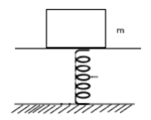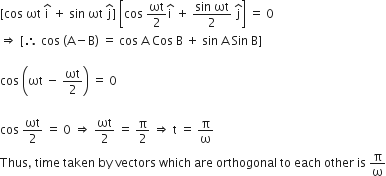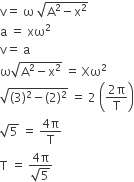A mass of 2.0 Kg is put on a flat pan attached to a vertical spring fixed on the ground as shown in the figure. The mass of the spring and the pan is negligible. When pressed slightly and released the mass executes a simple harmonic motion. The spring constant is 200 N/m. What should be the minimum amplitude of the motion, so that the mass gets detached from the pan?

Take g = `10 m/s2
Solution
Multi-choise Question
B.
10.0 cm
Let he minimum amplitue of SHM is a.
Restoring force on spring
F = ka
Restoring force is balanced by weight mg of block. For mass to execute simple harmonic motion of amplitude a.
ka = mg
a = mg/k
Here, m =2 kg, k = 200 N/m, g = 10 m/s2
therefore, a = 2 x 10 / 200 = 10/100 m.
10 cm
 are functions of time, then the value of t at which they are orthogonal to each other
are functions of time, then the value of t at which they are orthogonal to each other





















